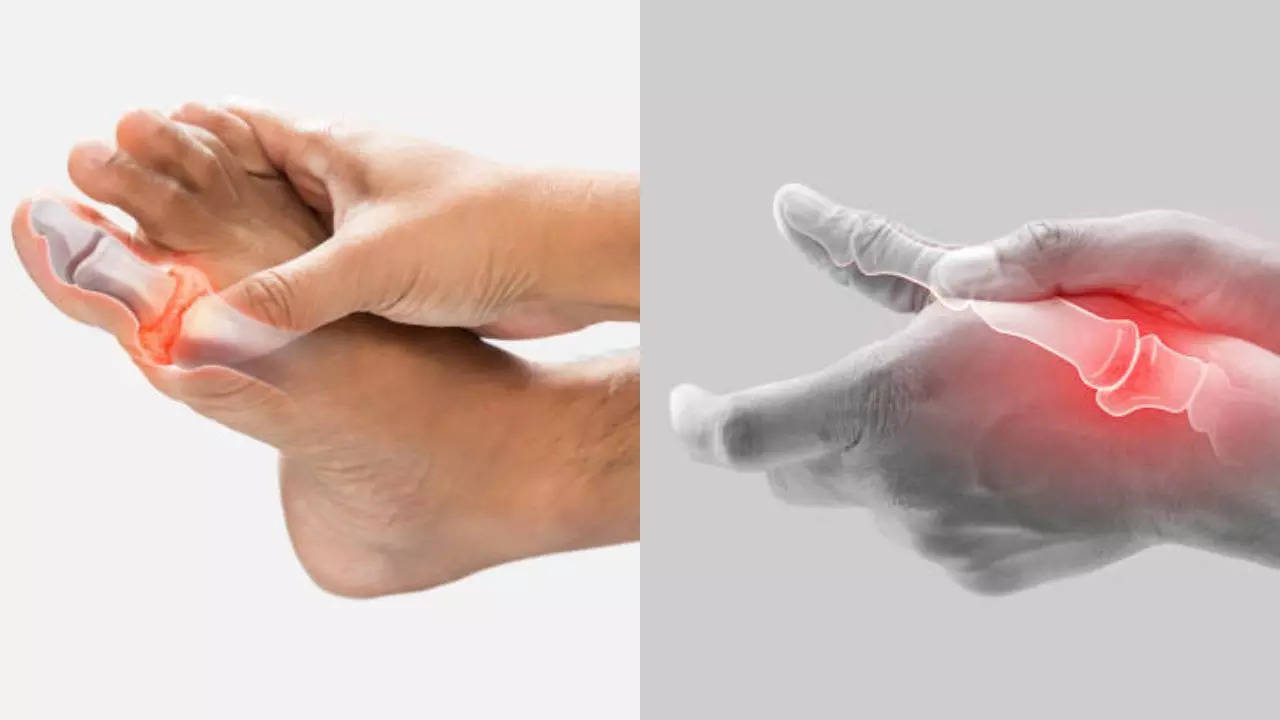Contents
-
news
-
Health
5 dangerous symptoms of high uric acid that appear in your hands and feet
It is normal to have some uric acid in the blood. However, if levels go above or below healthy limits, it can cause dangerous health problems, including gout – a form of arthritis. Read on to know the dangerous symptoms of high uric acid that you need to take seriously.

If the level of uric acid in your body is too high, it can cause severe pain in your hands, feet, toes, ankles and knees.
Uric acid is a waste product in the body. However, sometimes it can accumulate in the joints and tissues, causing a variety of health problems. Doctors say arthritis flare-ups often begin suddenly at night, and the intense pain can be bad enough to wake you up.
Additionally, your joint may feel swollen, red, and warm. Gout flares usually occur in one joint and may be triggered by certain foods, alcohol, certain medications, physical trauma, or certain diseases. High uric acid causes hyperuricemia It sticks together in the form of sharp crystals that get deposited in your joints and cause gout – a painful form of arthritis. Here are some symptoms that you may need to take seriously.
pain in hands and feet
If the level of uric acid in your body is too high, it can cause severe pain in your hands, feet, toes, ankles and knees. If levels remain high, or a person is unable to manage the condition, it can lead to arthritis.
tofus
A buildup of uric acid in your joints can cause swelling under your skin called a tophi. If left untreated, tophi can cause loss of motion in your joints and other complications. According to experts, tophi can form in any of the following body parts:
- Feet
- knees
- Wrist
- Fingers
- Achilles tendon
- Ear
swelling in your knees
Gout is caused by inflammation of the joints due to high uric acid – because excess uric acid in the blood forms crystals that get deposited in the joints, causing swelling, pain and inflammation.
It is often characterized by sudden, painful flare-ups, usually affecting the joints of the big toe or other lower limbs.
redness
The typical accumulation of uric acid crystals in the joint begins with the accumulation of uric acid in the blood. It is formed when the body breaks down purines – a compound that occurs naturally in our tissues and is present in high levels in some foods, including alcoholic beverages, shellfish and some meats, including bacon, turkey, venison and organ. Meat is included.
Normally, uric acid is dissolved in the blood, filtered by the kidneys and excreted through urine. However, if the body produces too much uric acid or the kidneys are not efficient at eliminating it, it causes redness.
movement problems
High uric acid causes mobility problems primarily due to the build-up of uric acid crystals in the joints, which manifests as severe pain, swelling and inflammation, significantly limiting the range of motion in the affected joints. , making it difficult to walk normally; Particularly affects areas such as the big toe, ankle and knee.
Get the latest news live on Times Now with breaking news and top headlines from around the world.


